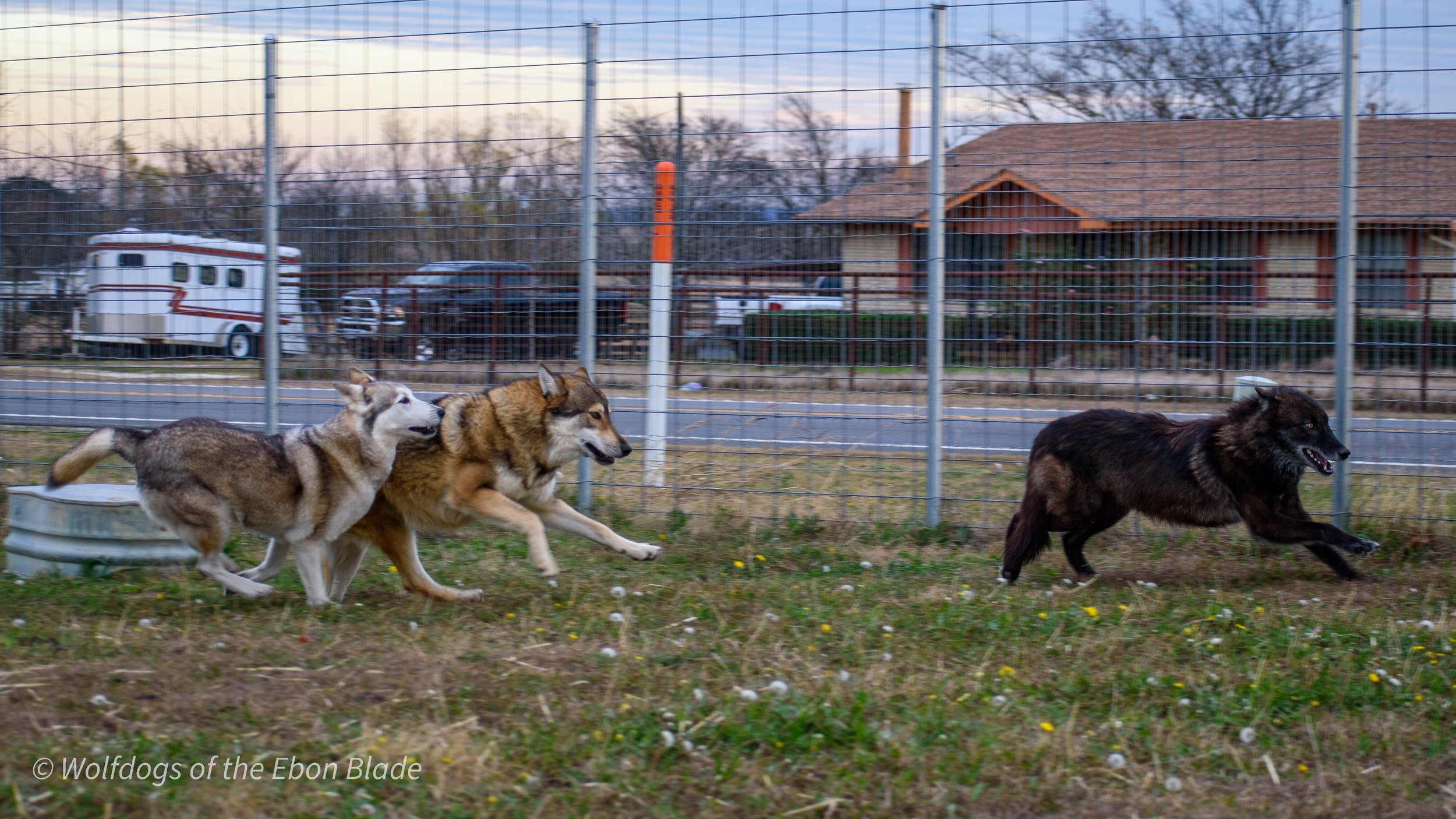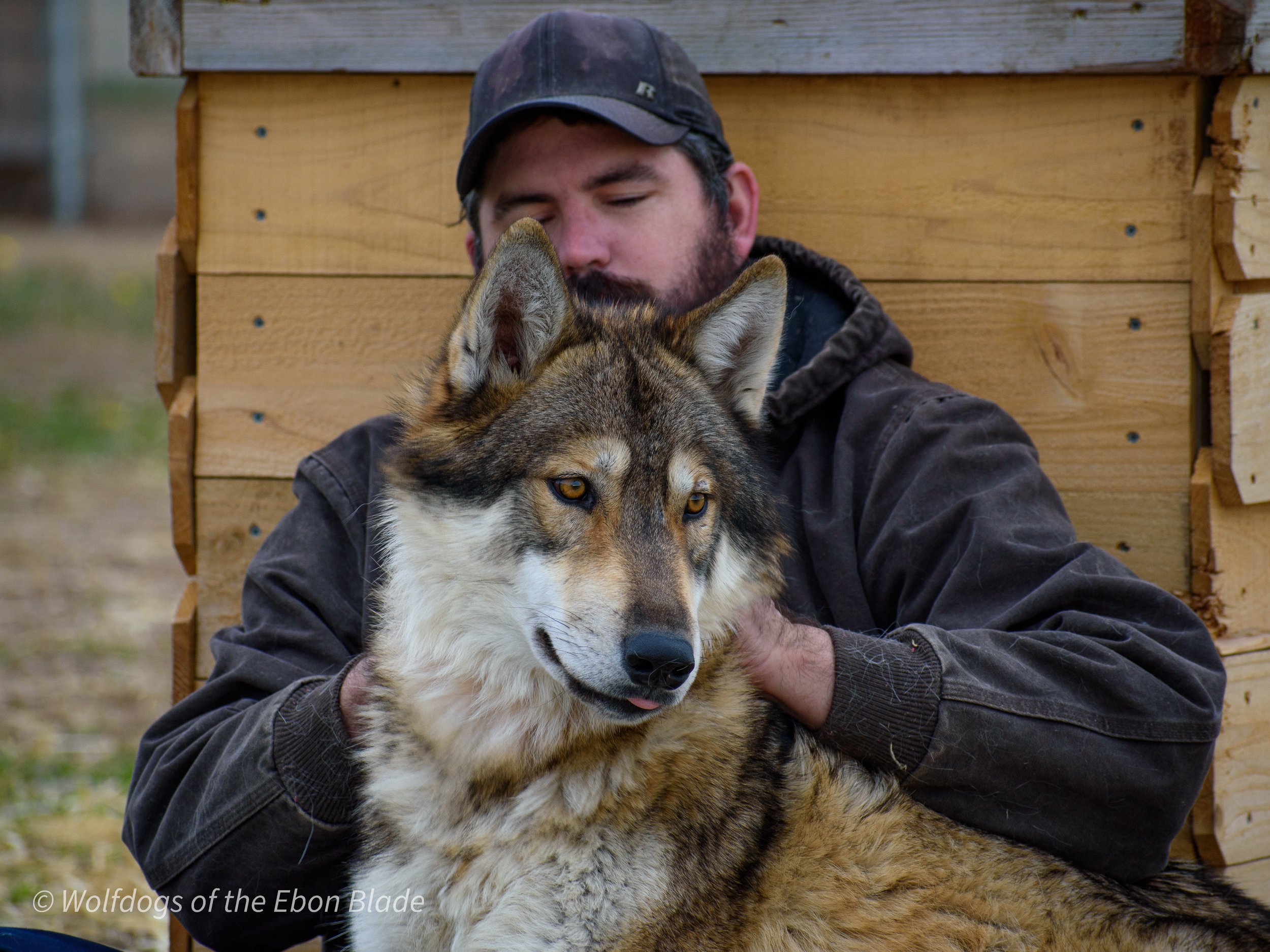
Wolfdogs vs. Wolf Hybrids? Exotic, Wild, or Domestic? What’s the difference and why does it even matter?
Understanding legal terms and definitions is important!
Whenever the topic of wolfdogs comes up in a conversation, most people don’t know a whole lot about them, but they have probably heard several different terms mentioned in passing, like exotic, wild, and hybrid, but don’t really know what those terms mean. It can raise a lot of questions: Are wolfdogs exotic animals? Are wolfdogs wild animals? Does a wolfdog even count as a dog? Is a wolfdog a Hybrid? What’s even the right term, wolfdog or wolf hybrid? It turns out, knowing and understanding these terms and definitions can answer each of these questions.
The United States Department of Agriculture (USDA) publishes a Code of Federal Regulations (CFR) every year that define and establish all kinds of laws and regulations for just about everything agriculturally related you can think of. Reading through the entire CFR publication would take a long time! However, CFR 9-1.1 Definitions has the information that we need. Click the button below to view the complete CFR publication.
What is an Exotic Animal?
According to USDA CFR 9-1.1:
“Exotic animal means any animal not identified in the definition of “animal” provided in this part that is native to a foreign country or of foreign origin or character, is not native to the United States, or was introduced from abroad. This term specifically includes animals such as, but not limited to, lions, tigers, leopards, elephants, camels, antelope, anteaters, kangaroos, and water buffalo, and species of foreign domestic cattle, such as Ankole, Gayal, and Yak.”
This answers one of our questions: Are wolfdogs/wolf hybrids exotic animals? The answer is: No, wolfdogs/wolf hybrids are not exotic animals. This is because wolves and dogs are both native to North America and the USA.
What is a Wild Animal?
According to USDA CFR 9-1.1:
“Wild animal means any animal which is now or historically has been found in the wild, or in the wild state, within the boundaries of the United States, its territories, or possessions. This term includes, but is not limited to, animals such as: Deer, skunk, opossum, raccoon, mink, armadillo, coyote, squirrel, fox, wolf.”
This answers another question: Are wolfdogs/wolf hybrids wild animals? The answer is: No, wolfdogs/wolf hybrids are not wild animals. This is because wolfdogs/wolf hybrids are not normally found in the wild. Although there are very, very rare documented instances of wild wolves crossbreeding with domesticated dogs, this is not considered by biologists to be typical behavior for wolves and generally will only happen if a lone wolf feels there are no other viable mates in the area during breeding season. Normally, wolves and wolf packs will chase away and even kill any domestic dogs who are unfortunate enough to wander into the pack’s territory. Wolves are naturally very wary and view strange canines as a threat to their pack.
What is a Hybrid?
According to USDA CFR 9-1.1:
“Hybrid cross means an animal resulting from the crossbreeding between two different species or types of animals. Crosses between wild animal species, such as lions and tigers, are considered to be wild animals. Crosses between wild animal species and domestic animals, such as dogs and wolves or buffalo and domestic cattle, are considered to be domestic animals.”
The sentence in bold is very important for several reasons:
It establishes that a Hybrid can ONLY result from the crossing of a wild parent to a domestic parent, and that the resulting Hybrid offspring is federally defined as a domestic animal.
This means that ALL wolf-mixed dogs are federally defined to be domesticated animals.
This also means that only F1 Wolf Hybrids can actually be referred to as Hybrids.
F_ refers to Filial Generation. The number after the F represents how many generations removed that animal is from its closest wild ancestor in its pedigree.
F1 = 1 wolf parent, 1 non-wolf (domestic) parent
F2 = wolf grandparent(s), but no wolf parents
F3 = wolf great-grandparent(s), but no wolf grandparents or parents
F4 = wolf great-great-grandparent(s), but no wolf great-grandparents, grandparents, or parents
Etc. The Filial Generation can go up even into the teens and twenties, depending on the pedigree of the wolfdog!
It also establishes that F2+ generations are NOT Hybrids. These generations are typically referred to as “wolfdogs” (unless the dog is part of a registered breed, in which case you simply refer to it by the breed name, such as Saarloos Wolfdog or Czechoslovakian Vlcak, both of which were founded using Eurasian Wolves and German Shepherd Dogs).
What are F2+ wolfdogs, then? Are they just…dogs?
According to USDA CFR 9-1.1:
“Dog means any live or dead dog (Canis familiaris) or any dog-hybrid cross.”
This means that, when you breed a Wolf Hybrid to a domestic dog, the offspring are… dogs!
All F2, F3, F4, F5, etc. generations of wolf-mixed dogs are defined as domestic dogs.
Here are some additional examples of calculating Filial Generations. Remember, you are counting the number of generations forward from the closest wild ancestor in the pedigree, which is counted as Generation Zero (0).
Wolf x Dog = F1 Hybrid (1 parent is wild and 1 parent is domestic)
Wolf x F1 = F1 Hybrid (1 parent is wild and 1 parent is domestic)
F1 x F1 = F2 (grandparent(s) are wild, but parents are domestic)
F1 x F2 = F2 (a grandparent is wild, but parents are domestic)
F2 x F2 = F3 (g-grandparent(s) are wild, but grandparents and parents are domestic)
F3 x F1 = F2 (a grandparent is wild, but parents are domestic)
F3 x F5 = F4 (g-grandparent is wild, but grandparents and parents are domestic)
F9 x Wolf = F1 Hybrid (1 parent is wild, 1 parent is domestic)
F4 x F8 = F5 (g-g-g-grandparent is wild, but all closer relatives are domestic)
F6 x F6 = F7 (g-g-g-g-grandparent(s) are wild, but all closer relatives are domestic)
The possible combinations are endless. Just remember, find the closest wild ancestor in the dog’s pedigree - they are Generation 0. Start counting 1, 2, 3, etc. forward until you get to the dog itself (include the dog as a generation in your count). Only the F1 generation is a Hybrid. F2+ Generations are defined by USDA CFR 9-1.1 to be dogs.
Here’s where it gets complicated…
Not all states in the USA have laws that reflect the above federal terms and definitions. Many state lawmakers aren’t even aware of the differences in these terms in the first place! Unfortunately, this has resulted in several states passing laws which restrict or ban owning wolf-mixed dogs. These laws don’t always use the correct language, either, which can make things very confusing for the average person who is trying to verify their state, county, and city laws.
Only a small number of states use very precise language in their laws which make it very clear exactly what they are regulating. For example, Nebraska’s state law says that you need a state wildlife license to own a pure wolf or an F1 Hybrid where one parent was a pure wolf. F2+ generations are treated as domesticated dogs by the state of Nebraska and you don’t need a state wildlife license to own them. California bans the ownership of pure wolves and F1s, but allows F2+ generations.
There are some states, like Wisconsin, Georgia, New York, Alaska, and Hawaii, who ban ALL percentages of wolf, from 1% to 99%, but they use the term “wolf hybrid.” Most states, unfortunately, use this kind of ambiguous and even incorrect language as a blanket term, labeling wolf-mixed dogs as wolf hybrids or even wild or exotic animals no matter what Filial Generation they are, or what percentage of wolf they are - even down to 1% in some states!
If you live in a state that uses unclear language in their laws, it is ALWAYS important to contact them IN WRITING (usually via email is fine) to ask them to give you an exact definition of what they consider to be a wolfdog, wolf hybrid, wild animal, exotic animal, etc. (whatever terms they are using in their laws).
Never put an animal’s life in danger by failing to understand the law.






